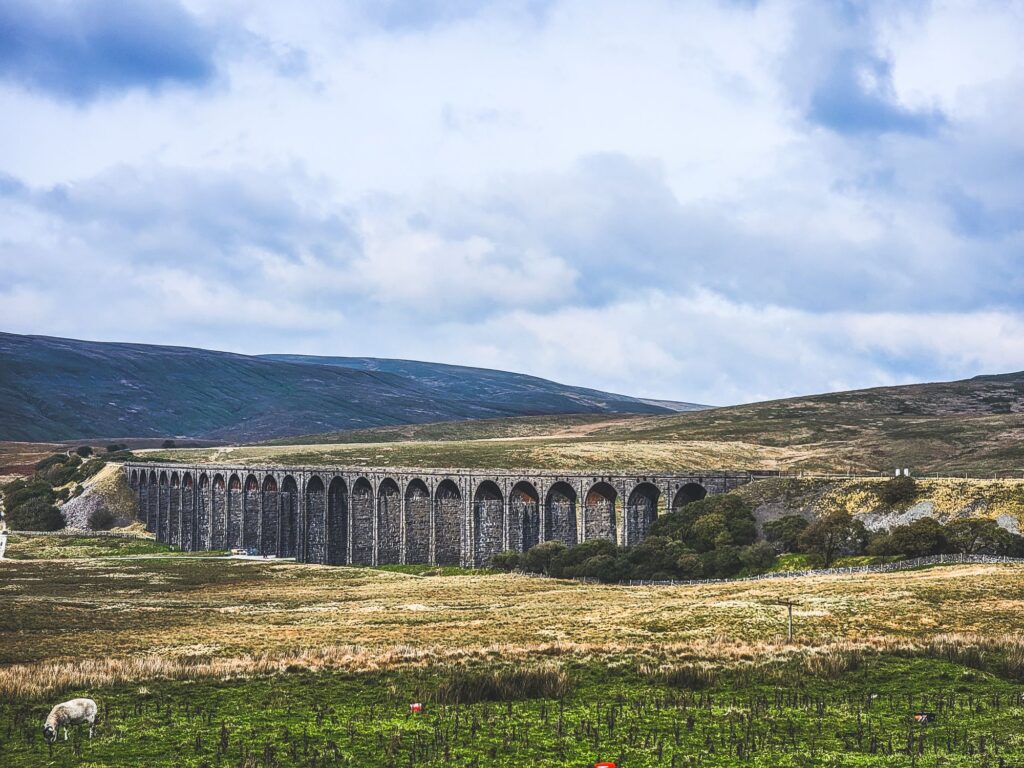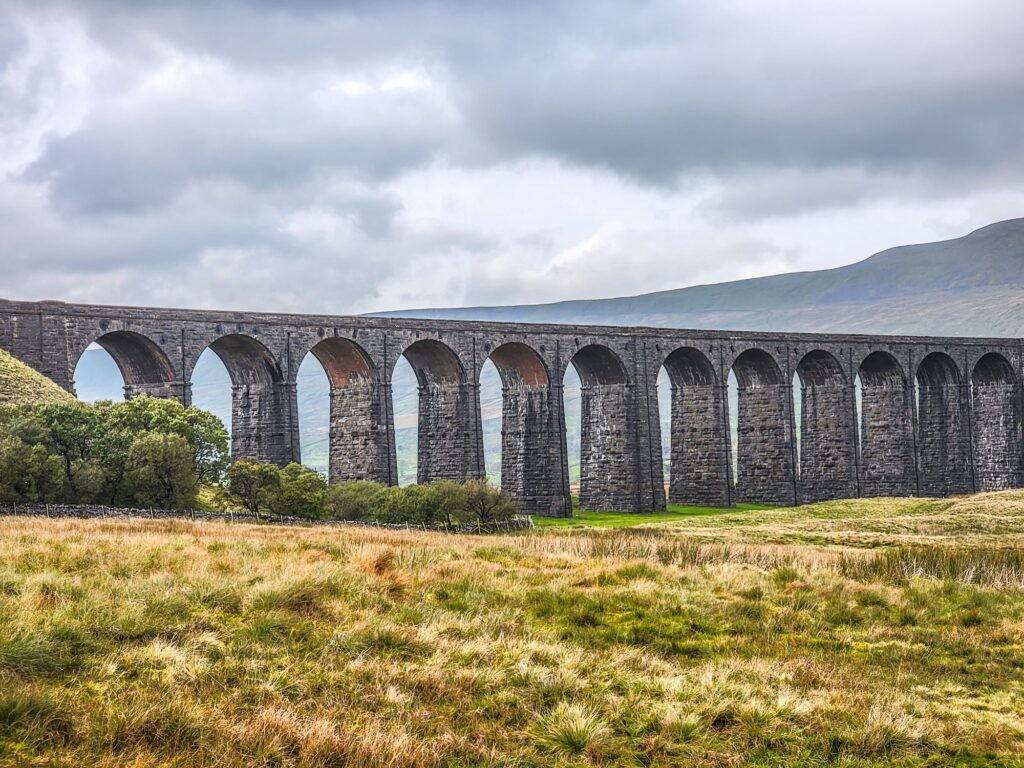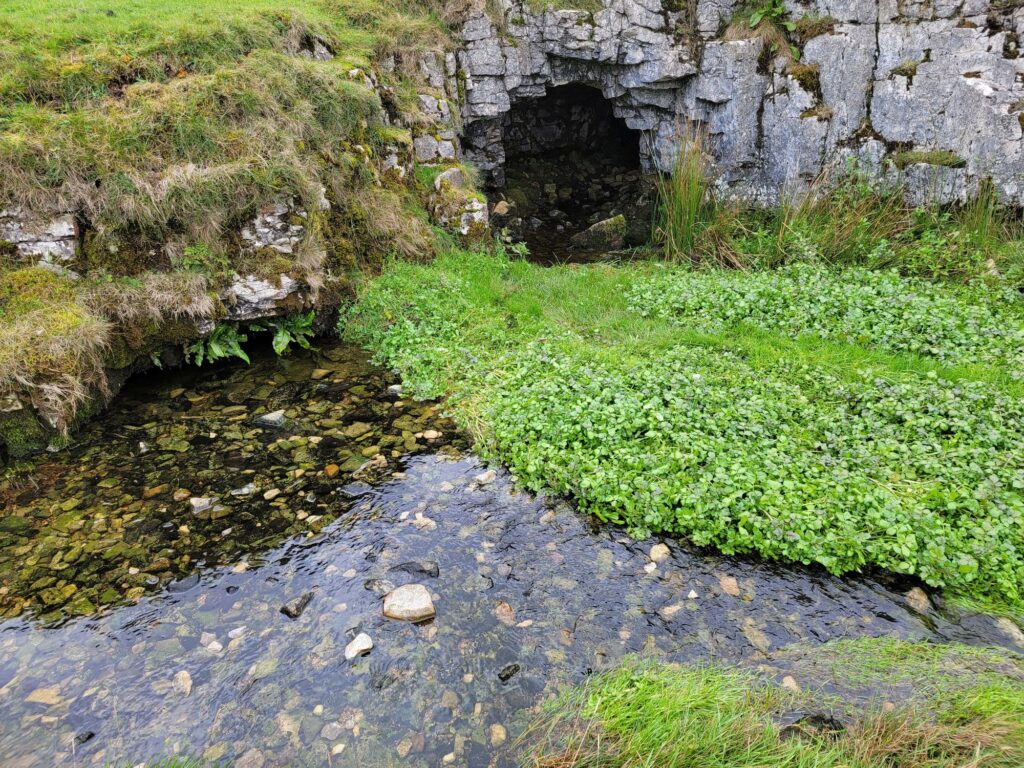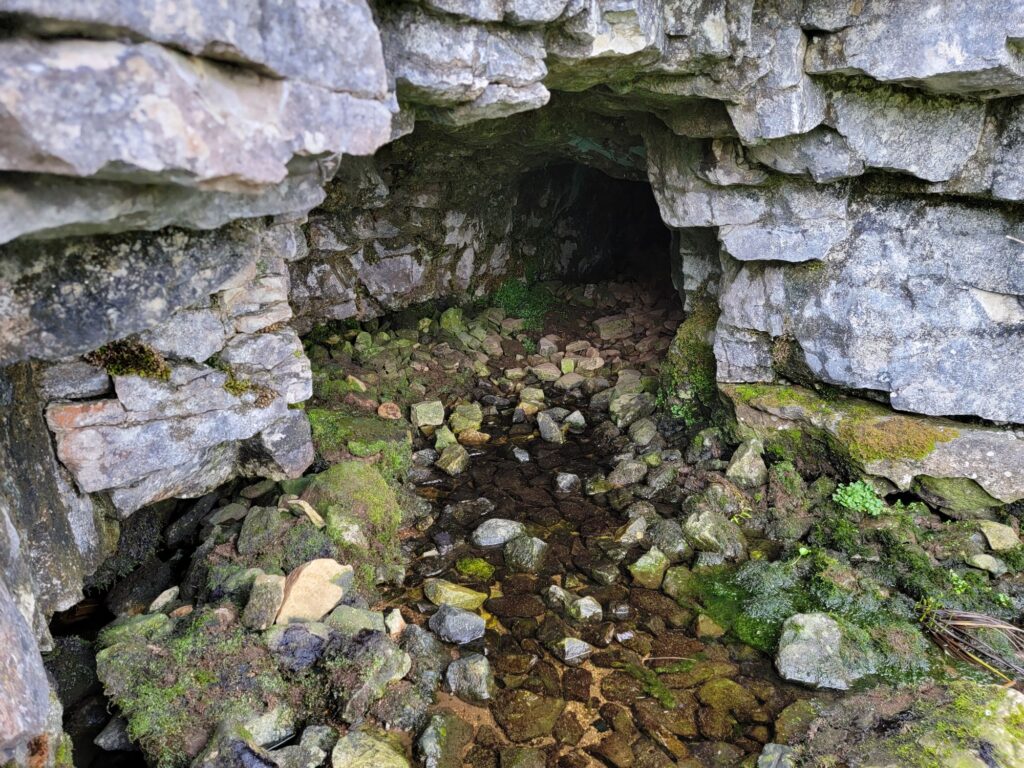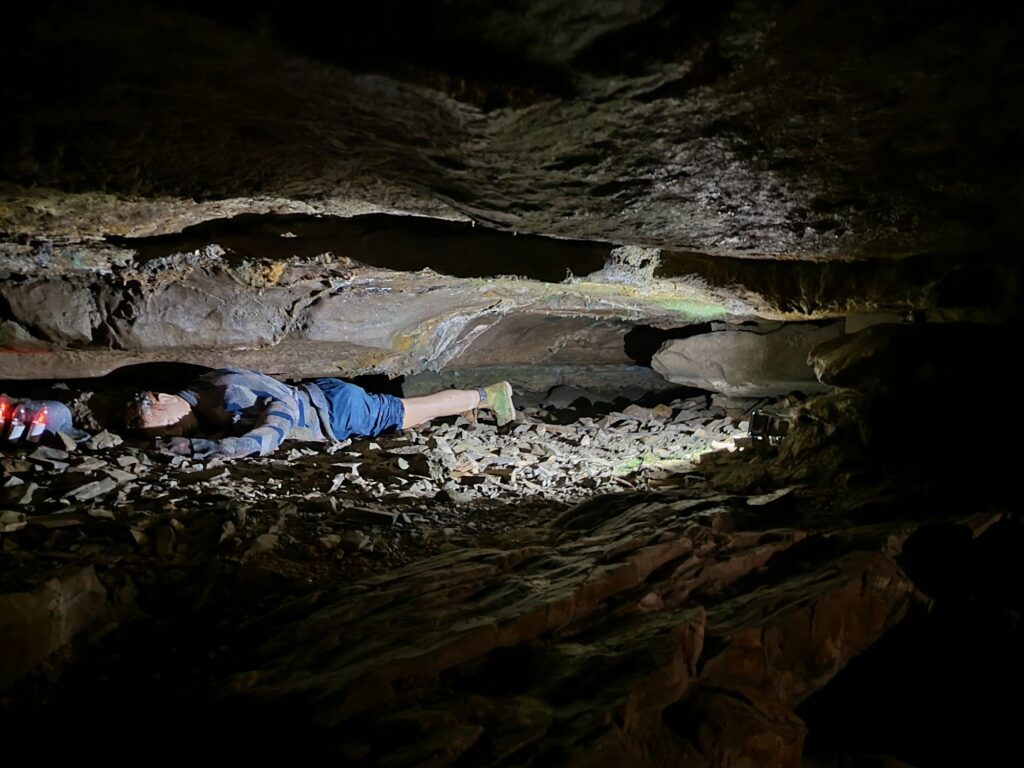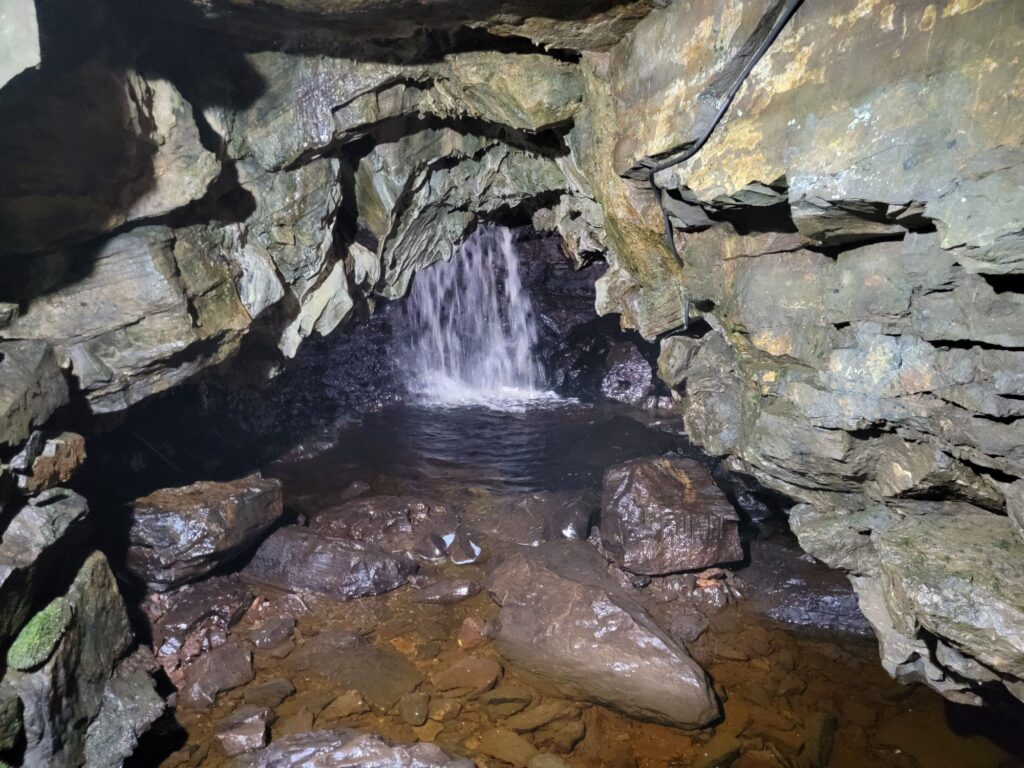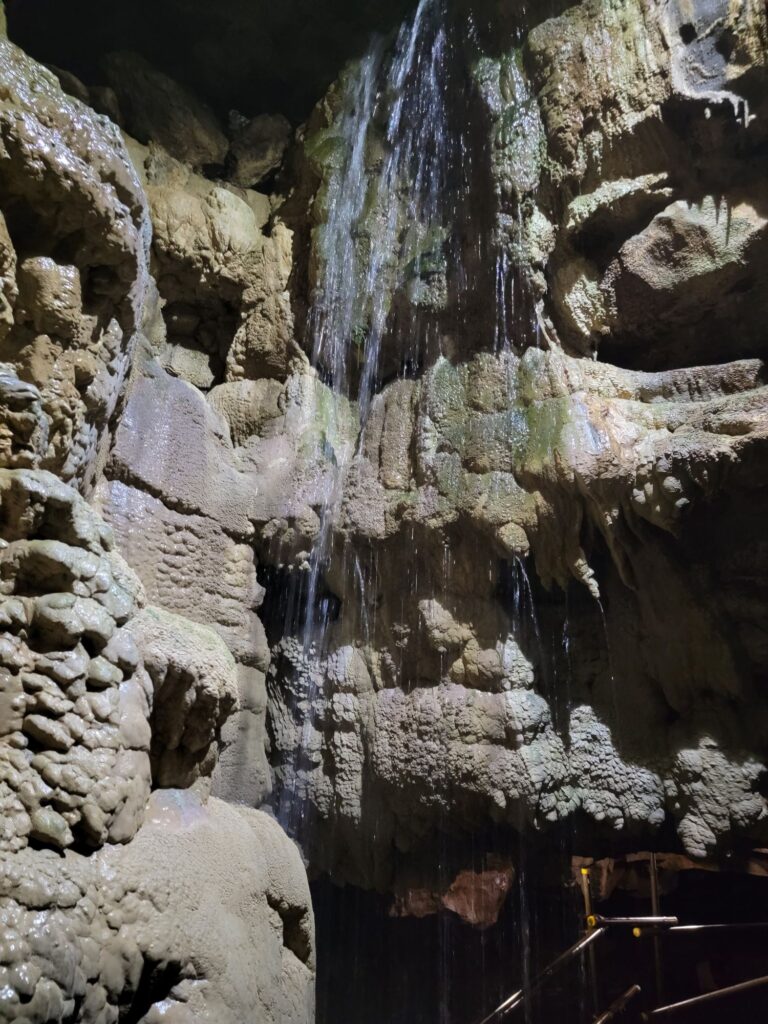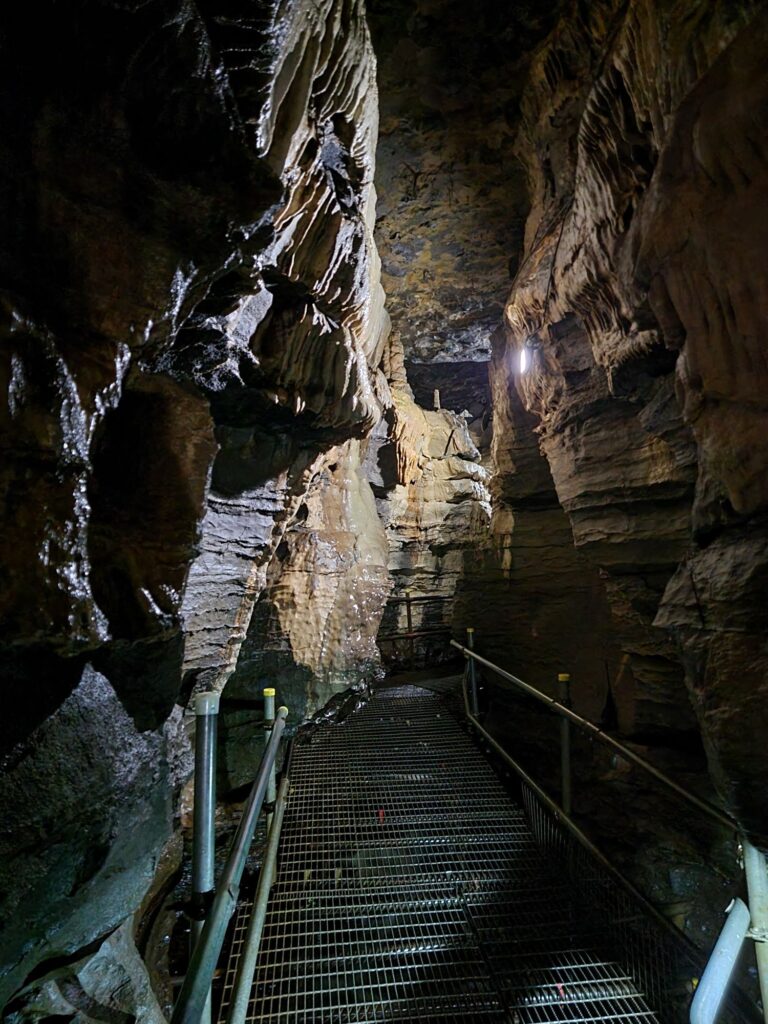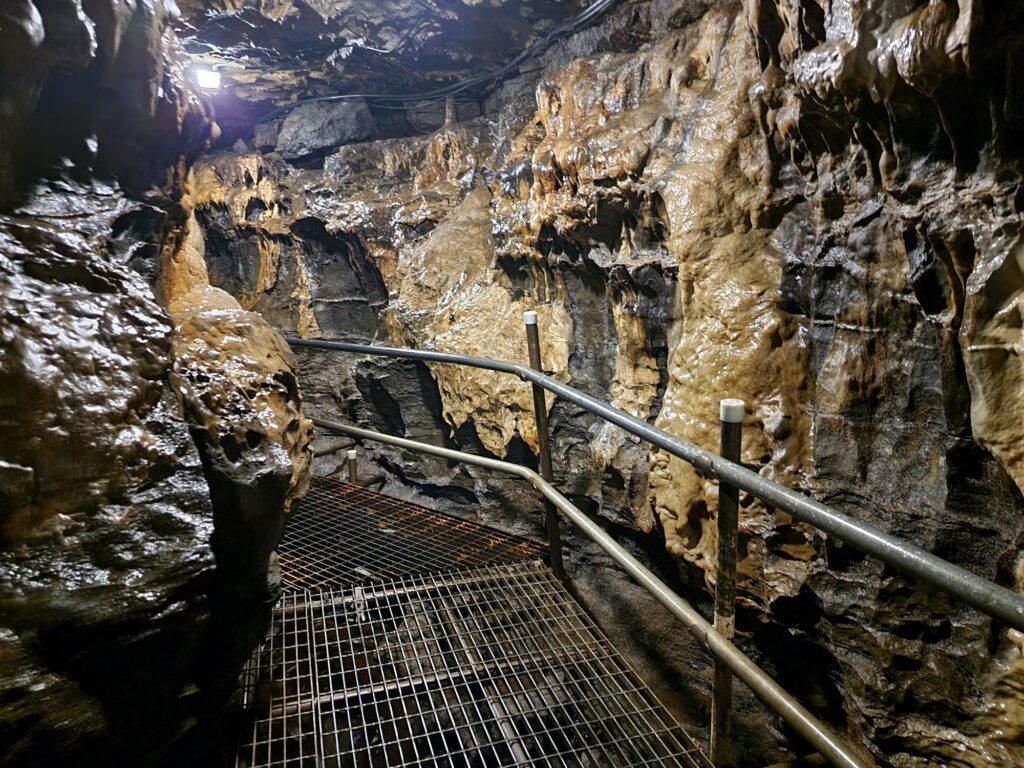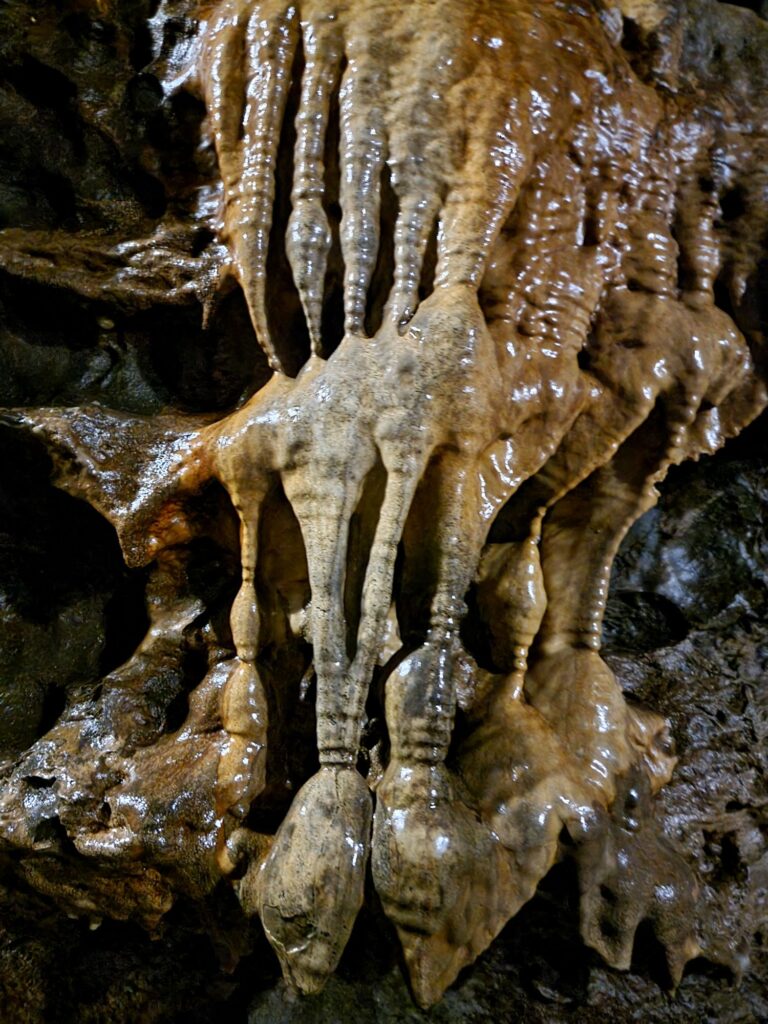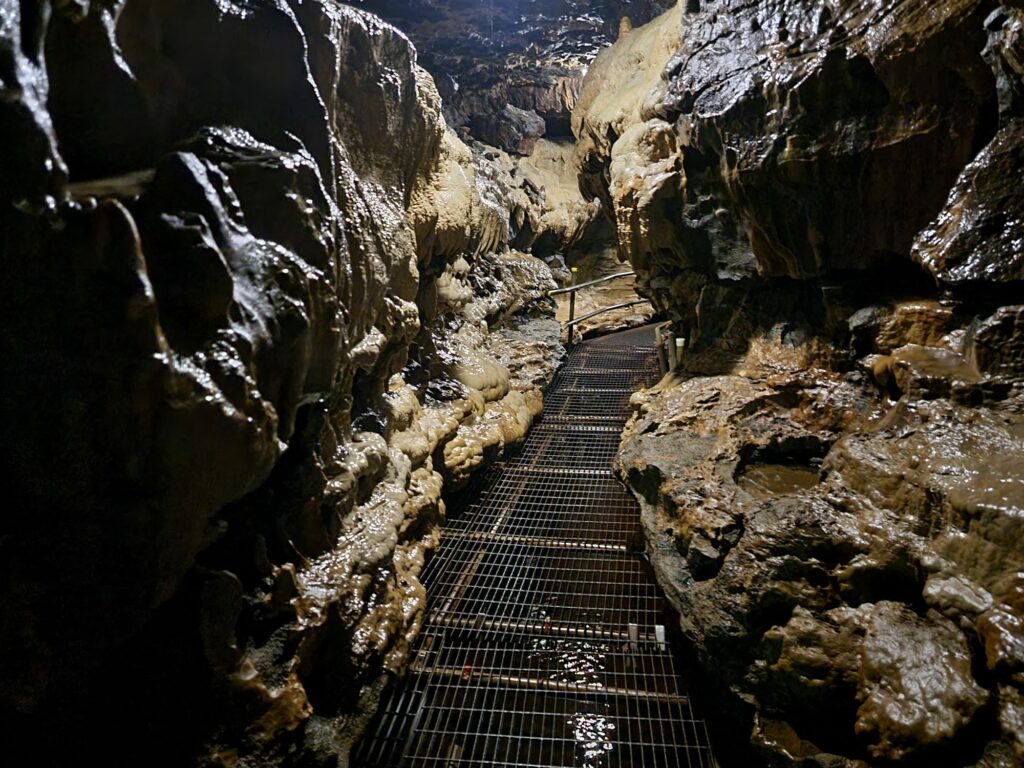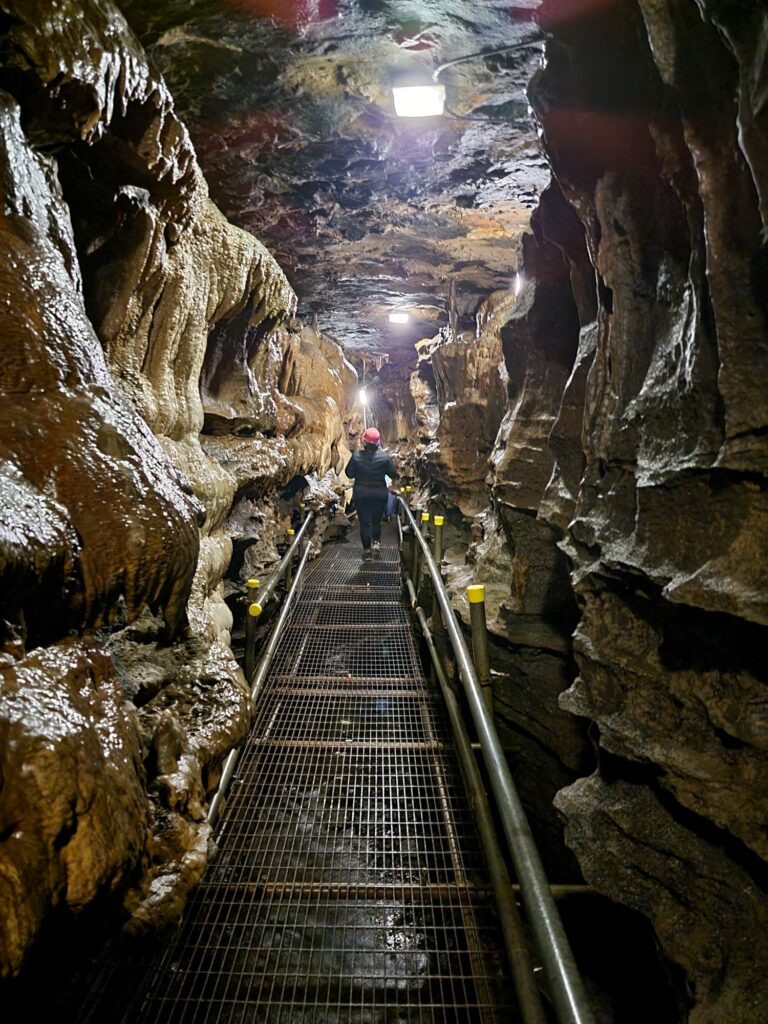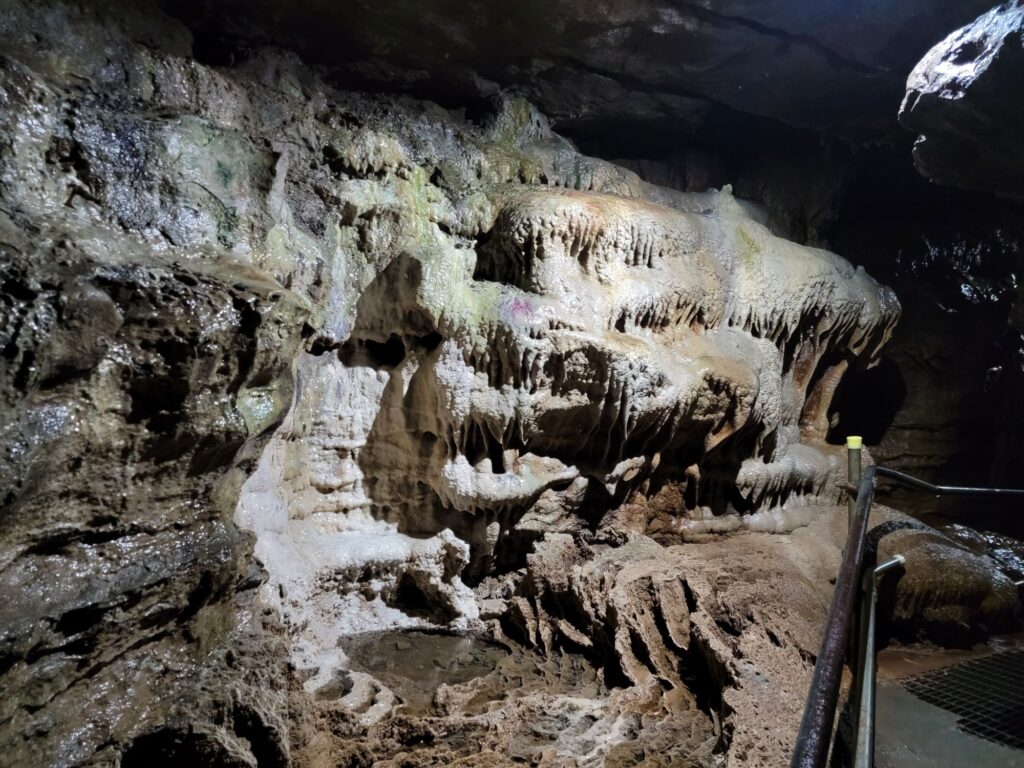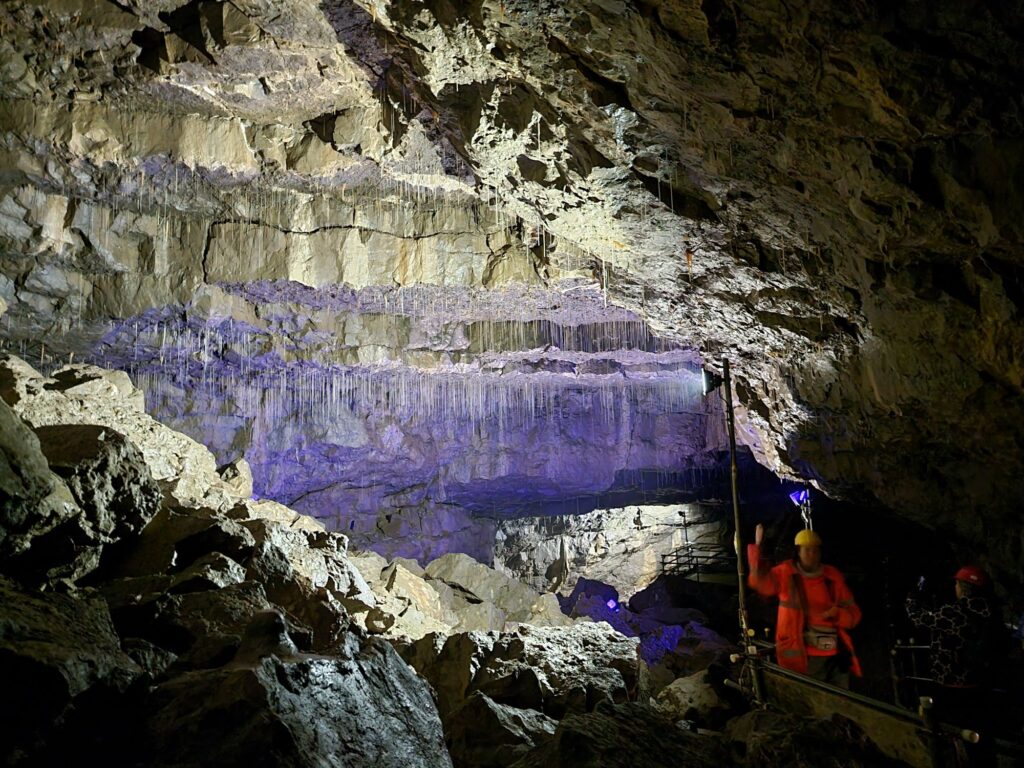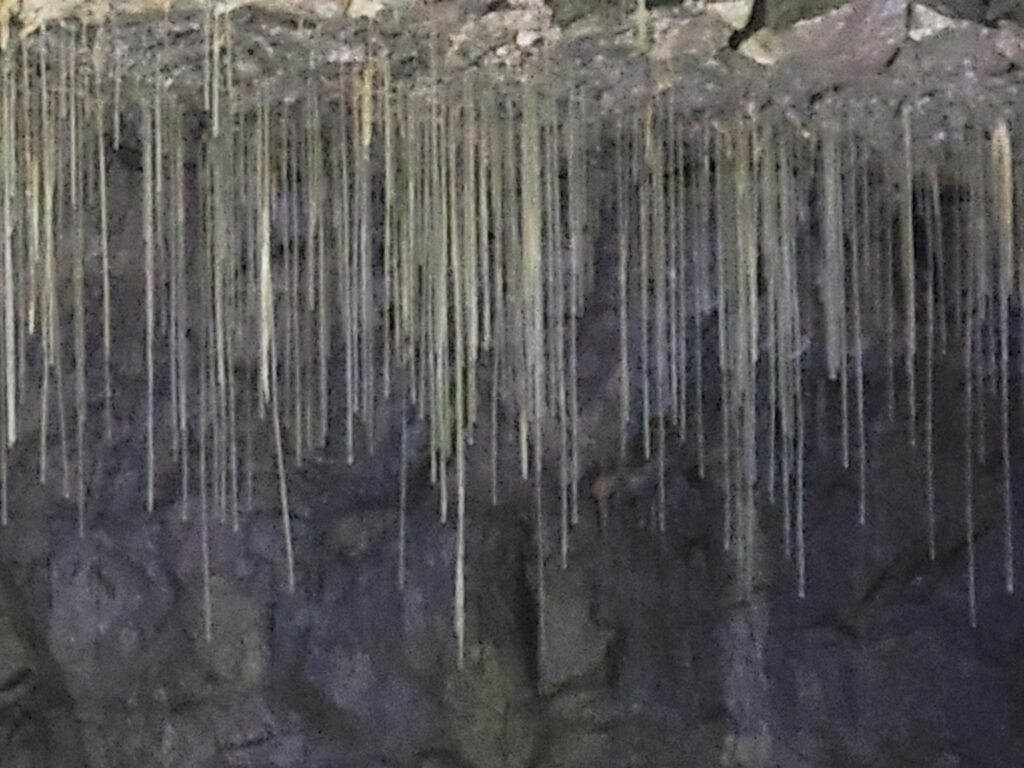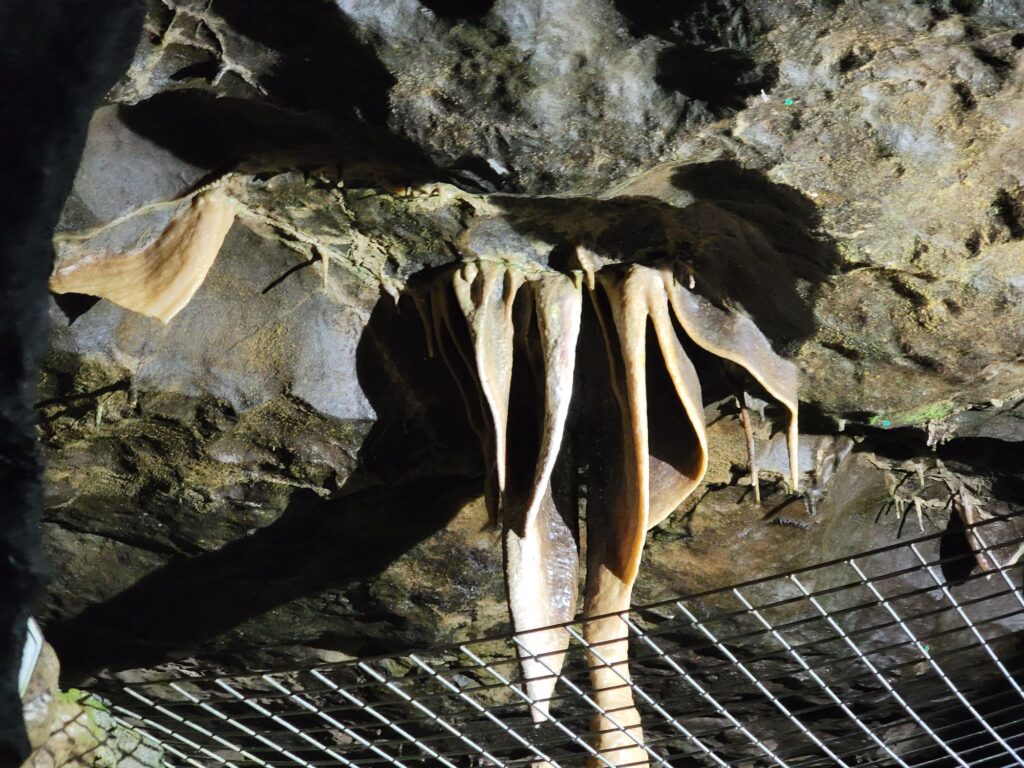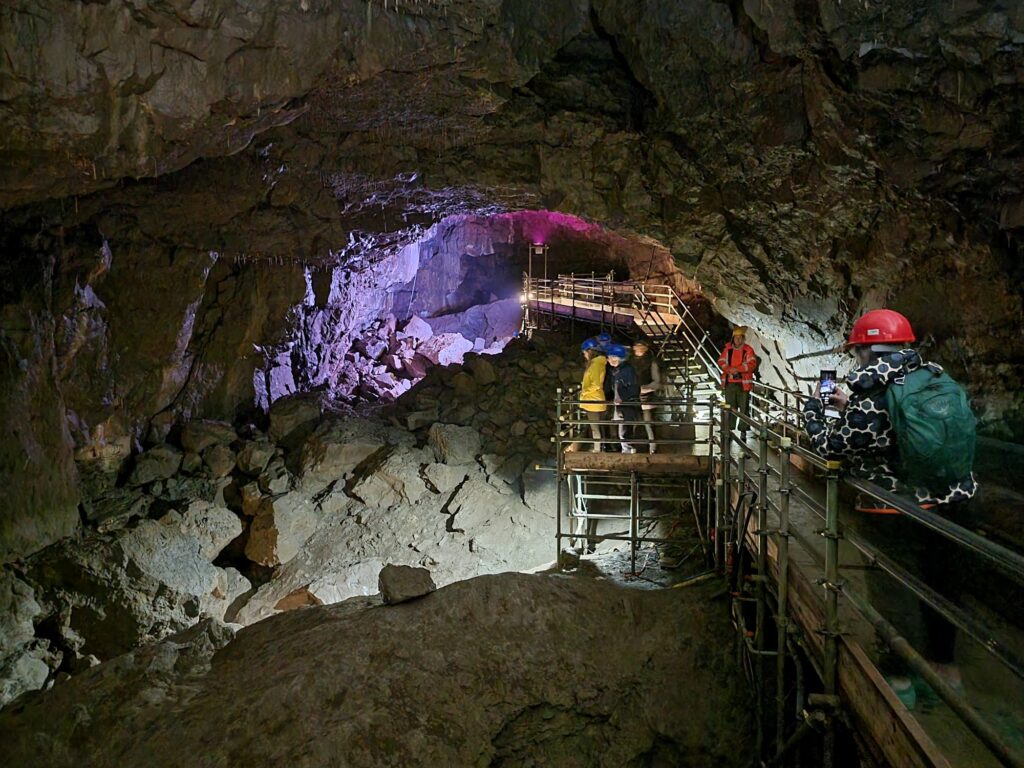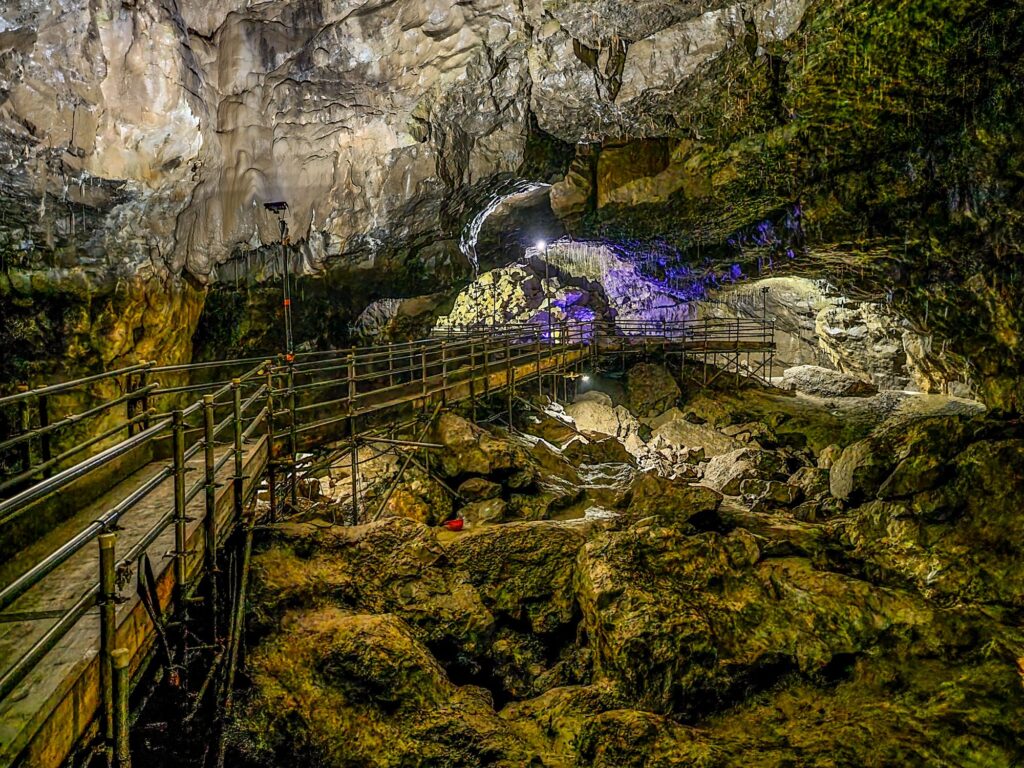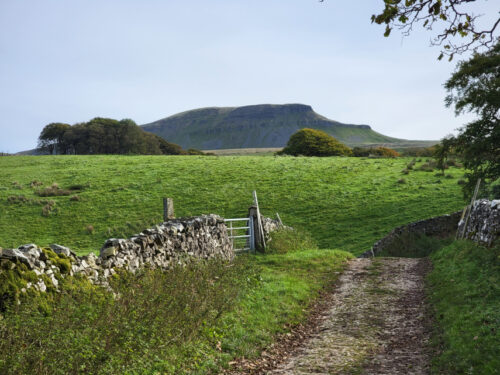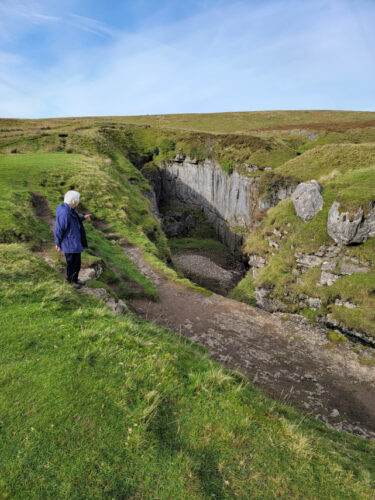Today was our first full day in the area and we set off eastwards into the Yorkshire Dales towards Keld and Muker along the B6270 road. Don't take the 'B' classification as an indication that it is a reasonably fast road because this road is only one car wide, bends left and right and goes up and down all over the place. Luckily there are places where one can squeeze past other vehicles although we saw few of those (vehicles not passing places) but the scenery is really wonderfully dramatic.

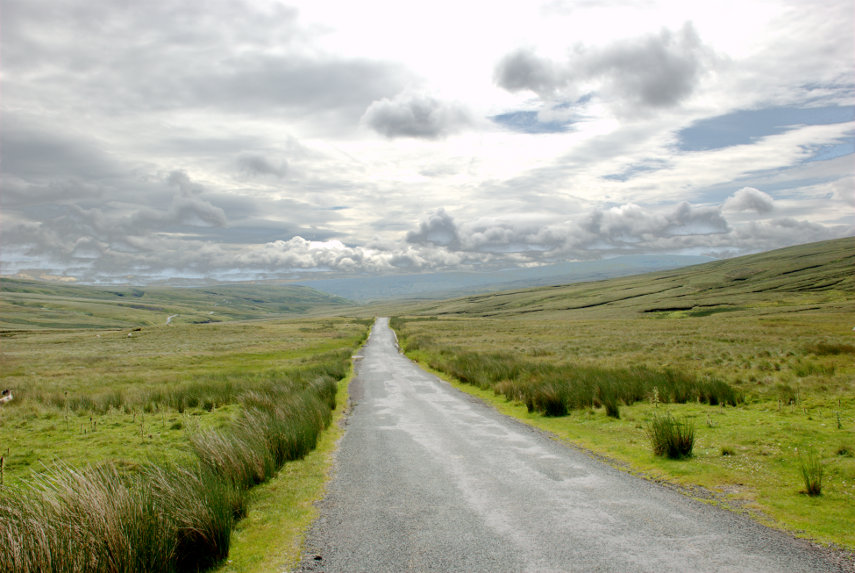
Looking at the road in the picture above you will see that it disappears over a hump in the distance and then, if you look carefully, you can see the road re-appear over to the left about halfway between this section that we're on and the left edge of the picture. It really does wander all over the place. Ocasionally one can find an area big enough to pull off and stop which is what we did around Hollow Mill Cross by Tailbrigg Hill and look what we found – another limestone pavement.

One of the interesting features of this limestone area is that the soil is mostly acid which seems to be a contradiction on limestone but there is so much rain up here that all the calcareous content has been leached from the soil.

This pavement is very well weathered and you'll notice the little tarn (lake) in the distance which is only there because the acid soil is relatively impermeable and just to the right of that tarn is the tiny figure of Amanda who is just about to make an interesting discovery.
She is heading for that row of humps to the right of her figure and this is what she found.

It's what is known as a Shake Hole. These are often 60-80 feet deep or more and can be caused by the collapse of part of a cave system below, fracturing the limestone, and allowing water to seep down and dissolve the limestone to form these shafts.
We decided to move on and eventually came down off the high ground into a very small village called Keld. We found a place to park and walked down to the river where there were a couple of nice little waterfalls.
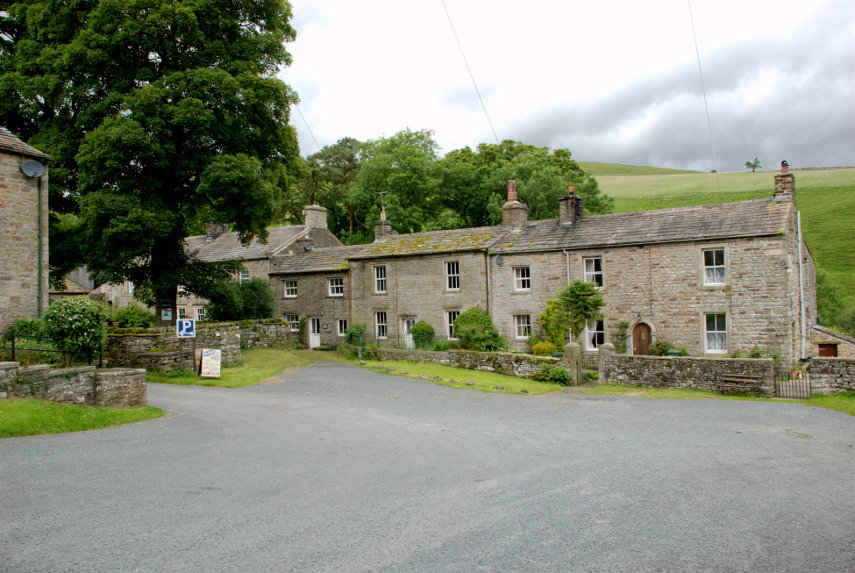


You may have noticed that on this trip the weather is rather changeable but it hasn't actually rained yet and we have had a little sun. We moved on to Thwaite where we had lunch and I now have a little tale to tell.
We had been to this area before, about 35 years ago, and on one night we stayed in a small pub in a small village and Amanda and I couldn't remember exactly where it was but she was keen to try and find out.
She remembered that it was called either The Queens Head or The Kings Head and we both remembered that it was run by an old lady. We both remembered that it was next to a small river which was thundering along because of all the rain at that time (nothing much changes does it?).
One of the people where we had lunch though, after hearing our tale, suggested that it may well have been in Gunnerside a few miles further along the road. So after lunch we set off and very soon caught a glimpse of Gunnerside.

Arriving in the village we soon found the Kings Head. This view of it is across the bridge over a small river. We went in and spoke to the people who now run it and had a brief look around and Amanda thinks that this could be the one. So one mystery solved.
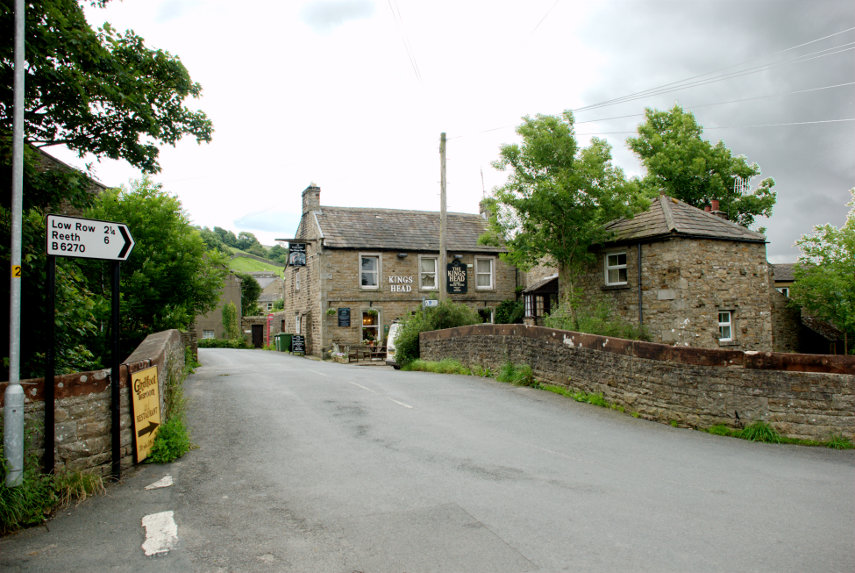
Our next destination was the Buttertubs up on the Buttertubs Pass at around 1700 feet. Now that was an interesting road with a steep drop on one side and, again, rather narrow. There was a flimsy looking barrier along the edge which I remember wasn't there when we came this way before. They do seem to pander to motoring wimps these days.
We arrived at the Buttertubs and found space (there isn't much) to park. It was also raining and I was trying to take photographs and keep the camera dry. This is one of those Buttertubs.
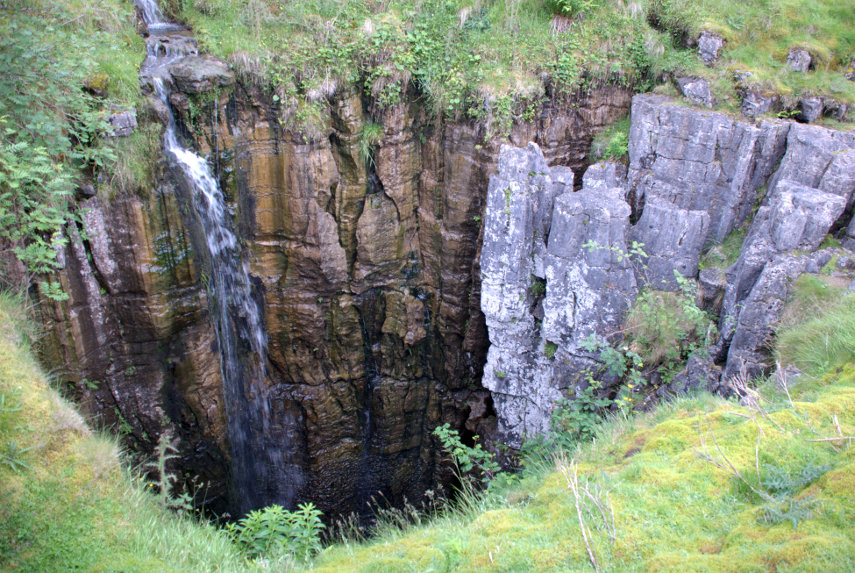
Needless to say you wouldn't want to fall into one of those and here is Amanda doing her "let's look down a big deep hole but don't go too near the edge" thing by another of the Buttertubs.
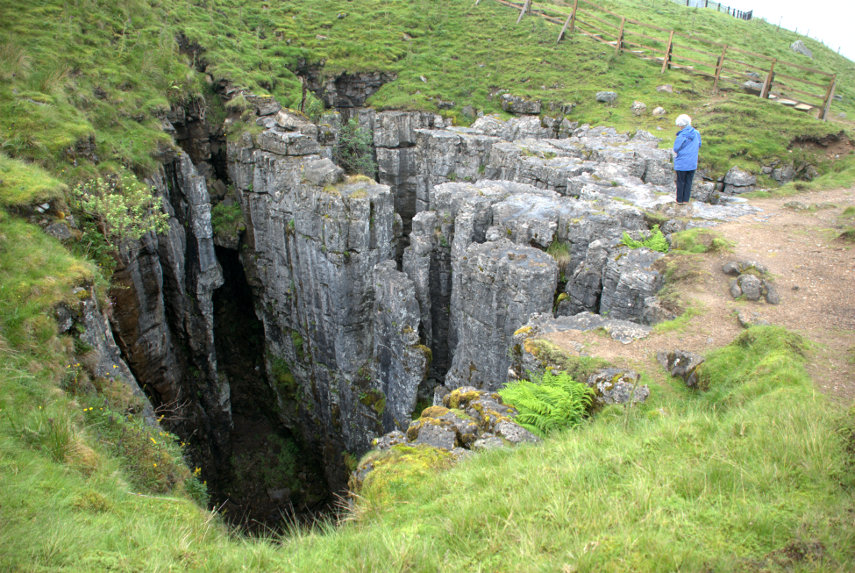
Where does the name come from? It is said that the name of the potholes came from the times when farmers would rest there on their way to market. During hot weather they would lower the butter that they had produced into the potholes to keep it cool. I can't say I'm thoroughly convinced by that but I can't offer an alternative explanation.
We decided to call it a day at this point, having seen an awful lot of rock and water, and returned via that same hairy road to our hotel. More tomorrow.
